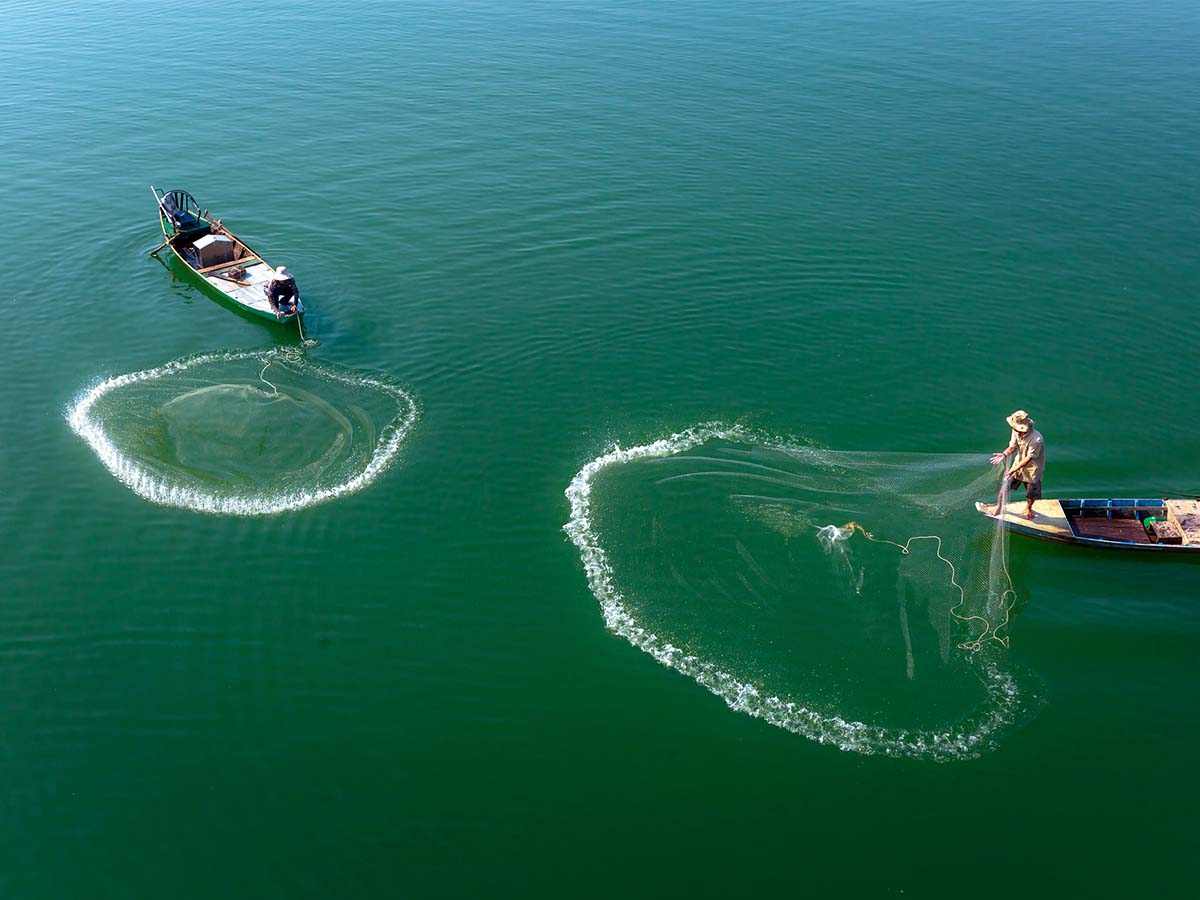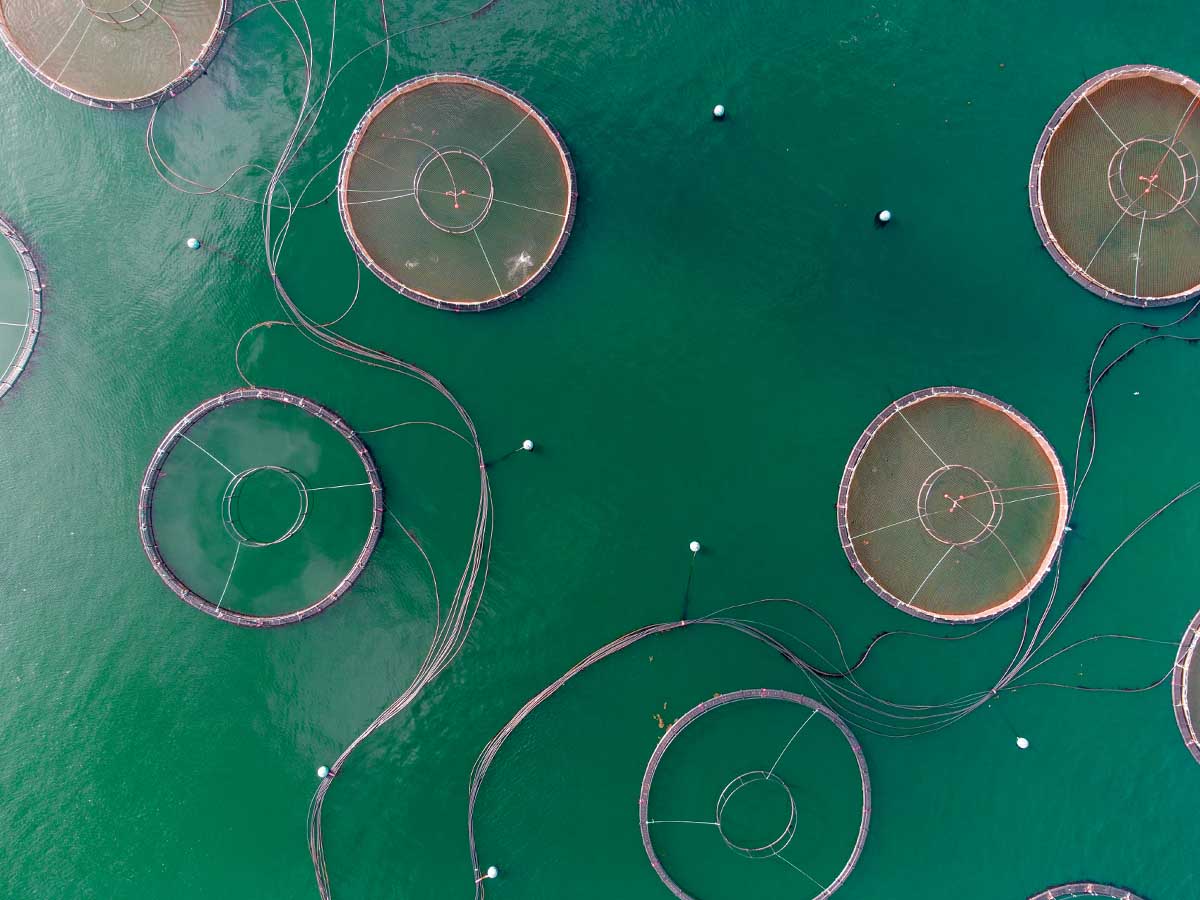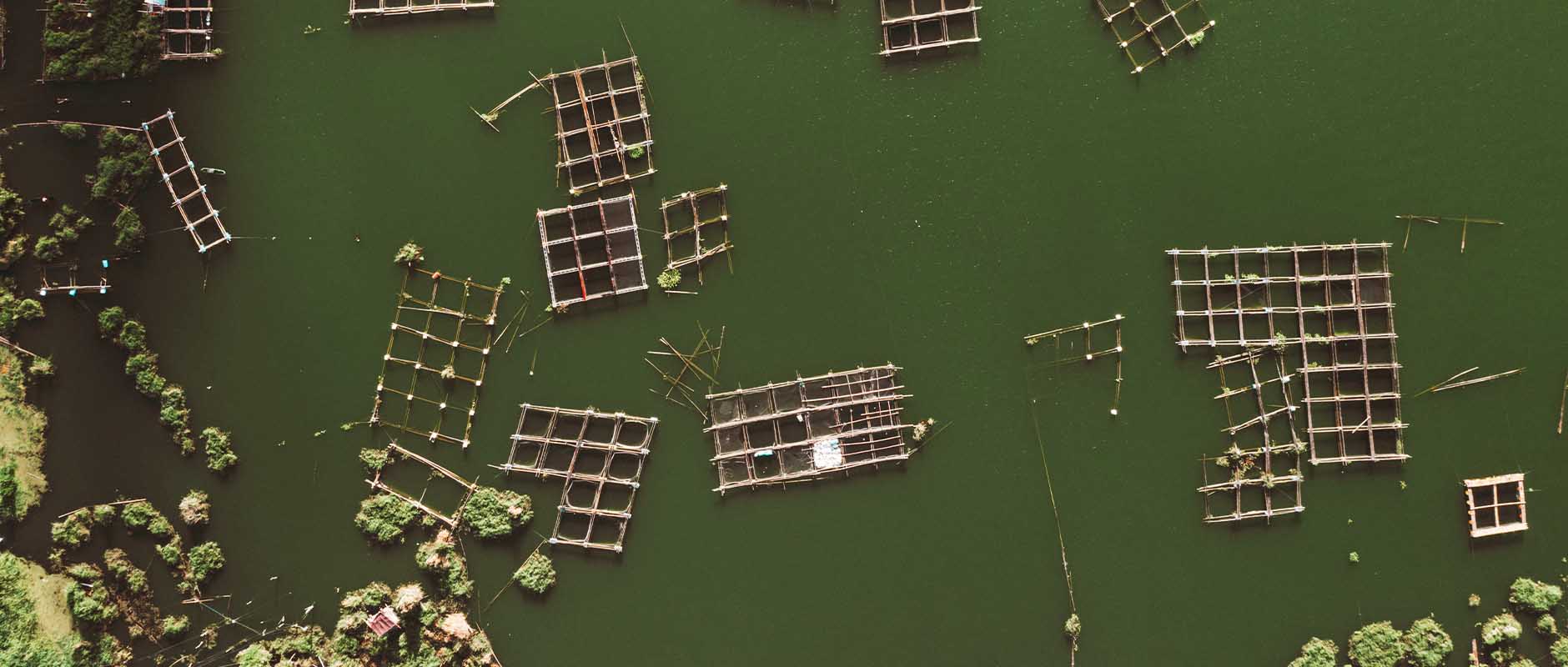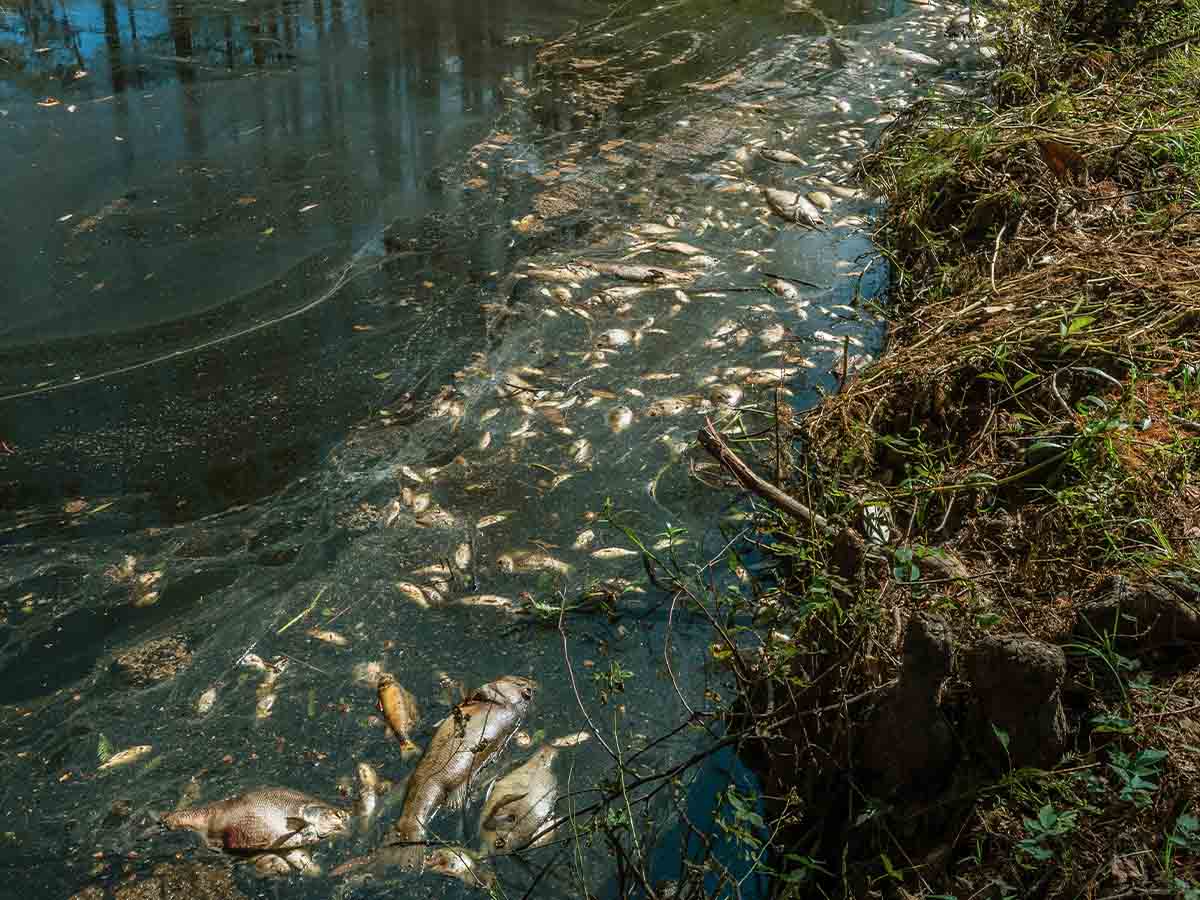Delicious shrimp cocktails, flavorful fish tacos, and nutritious seaweed salads – these ‘blue foods‘ are an essential part of our meals. Fished from our oceans and farmed in aquaculture settings, these aquatic delicacies form a significant cornerstone of global food consumption and the livelihoods of millions.
However, the road to our plates is not all smooth sailing, especially with the looming threat of environmental changes. Of all the threats, algae blooms, are posing significant challenges to blue food production.
Why blue foods matter

Our rivers, lakes, and oceans provide us with a feast of edible organisms – from the fish that are the stars of our meals, to shellfish and even algae. These blue foods aren’t just tasty, they have doubled their way into global food consumption in the past 50 years.
Beyond being a culinary delight, blue foods cast their net wider into the realm of economics, providing a livelihood for 10-12% of the world’s population. With our population growing, the demand for these water-based foods is soaring, but not without its share of hurdles.
Algae bloom’s impact
What’s vibrant, colorful, and harmful to our favorite seafood? Algae blooms. These rapid growths of algae can have dire effects on aquatic life, making it harder for fish to find food, and sometimes causing populations to relocate or even perish.
These blooms don’t just threaten aquatic life; they pose risks to us too. They can generate harmful toxins and, as the amassed biomass decays, deplete oxygen levels in the water. Both of these factors have a significant impact on the quality and safety of our seafood.
The risk to farmed seafood is even greater. The fish and shellfish we farm are often confined, unable to escape the sudden and severe blooms. This vulnerability was evident in 2019, when algae blooms in the Nordic fjords resulted in the death of about seven and a half million farmed Atlantic salmon, costing the industry over US$90M.
Unveiling new research

A recent study led by researcher Cao et al. uncovers a startling reality: over 90% of global blue food production is potentially at risk due to environmental changes, with key producers in Asia and the United States facing the brunt of this threat.
The research pinpoints harmful algae blooms (HABs) as a significant biological stressor that can endanger the safety and quantity of our blue foods. The toxins produced by HABs are unique stressors, impacting not only the amount but the quality of our seafood.
Alarmingly, HABs present the highest exposure risk in regions such as Polynesia, the Philippines, France, the United States, and Canada, where they significantly compromise blue food safety. Interestingly, while freshwater production is generally more vulnerable, the toxins from HABs have a larger impact on seafood safety in marine environments.
In essence, the sustainability and safety of our beloved seafood are at risk, significantly influenced by environmental changes like harmful algae blooms. By shedding light on these issues, we can hopefully navigate towards solutions to ensure that our favorite blue foods remain on our plates and within our reach.

